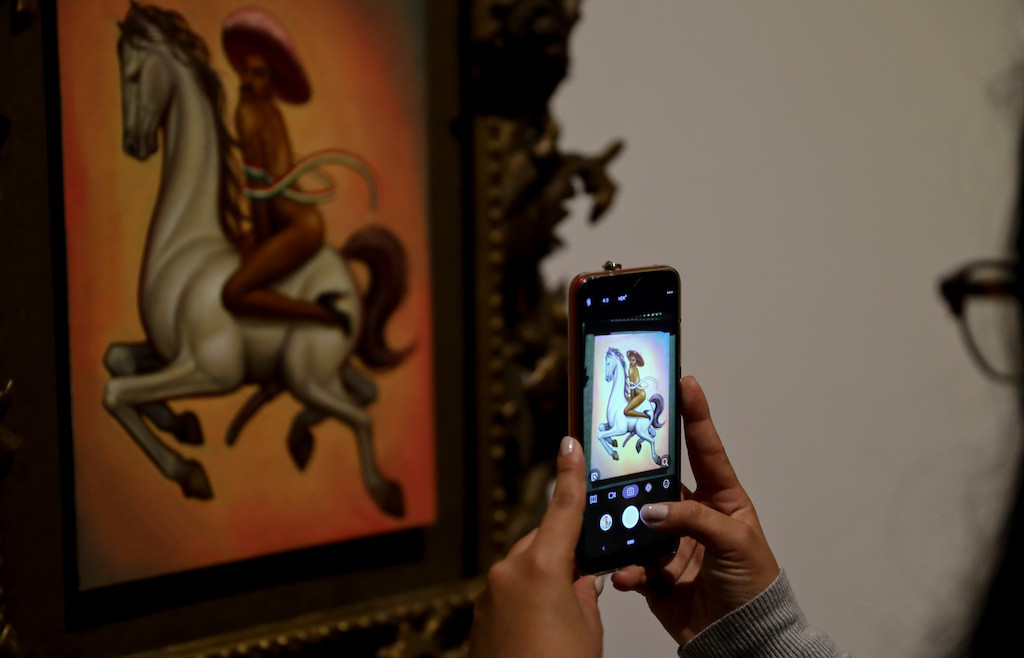[ad_1]
A few weeks ago, the art curator Luis Vargas Santiago married his husband in a ceremony attended by friends and family; now, the 36-year-old is dodging homophobic slurs and death threats from protesters who last week stormed the Palacio de Bellas Artes in Mexico City to remove a nude portrait of Emiliano Zapata from an ongoing exhibition focused on the revolutionary’s imprint on Mexican culture.
“It’s been emotionally exhausting,” Santiago told ARTnews in an interview. “People have written to me saying that if Zapata was alive, he would shoot me in the head—or maybe they would shoot me themselves.”
Although the exhibition contains more than 140 artworks, protesters have singled out La Revolución (The Revolution) by Fabián Cháirez because it depicts the vaunted war hero and symbol of machismo as a queer pinup model wearing a pink sombrero and heels while riding a horse with an erect penis. Last Tuesday, nearly 200 farmers who revere Zapata smacked and shoved past LGBTQ demonstrators showing support for the painting, as they rushed through the museum doors, intent on taking or destroying the piece.
“I was scared for everyone’s safety,” Santiago said. According to him, the museum’s director tried to calm the angry mob, and someone in the crowd responded by telling the executive that if he wanted dialogue, he should take off his clothes and dress like a woman, so that he resembles the artist’s portrayal of Zapata.
The confrontation was enough to catch the attention of Mexico’s president, Andrés Manuel López Obrador. “Artists have total freedom and we can’t have censorship,” he told a news conference. “What is all this about entering the Fine Arts Palace and punching people? We totally reject this.”
But behind the scenes, the Mexican government has arranged a compromise between the museum and some members of the Zapata family who have denounced the painting. In a meeting that excluded both Santiago and Cháirez, officials agreed to post a label alongside La Revolución that expresses the family’s disapproval of the work. The label was installed earlier this week, which greatly worried Santiago. “We have created a dangerous precedent for freedom of expression in this country,” the curator and art historian said. “What the president did was give credit to one interpretation over all others.”
And despite that agreement, there are no assurances that the violent protests will end. The government spoke with only one branch of the Zapata family; it was another branch, led by Zapata’s grandson Jorge Zapata González, which has instigated farm workers into action. Zapata González has told the press that he may pursue legal action against the museum if the painting is not taken down. The future of its exhibition therefore remains uncertain.
In the meantime, authorities have agreed to provide a security detail for Cháirez because of the many death threats that the artist has received. Santiago is also trying to navigate life under constant public scrutiny. “What’s happening at the museum is part of a bigger problem,” he said. “These men see femininity as a threat. This crisis of masculinity then translates into forms of gender-based violence, hate crimes, homophobia, and transphobia.”
[ad_2]
Source link

